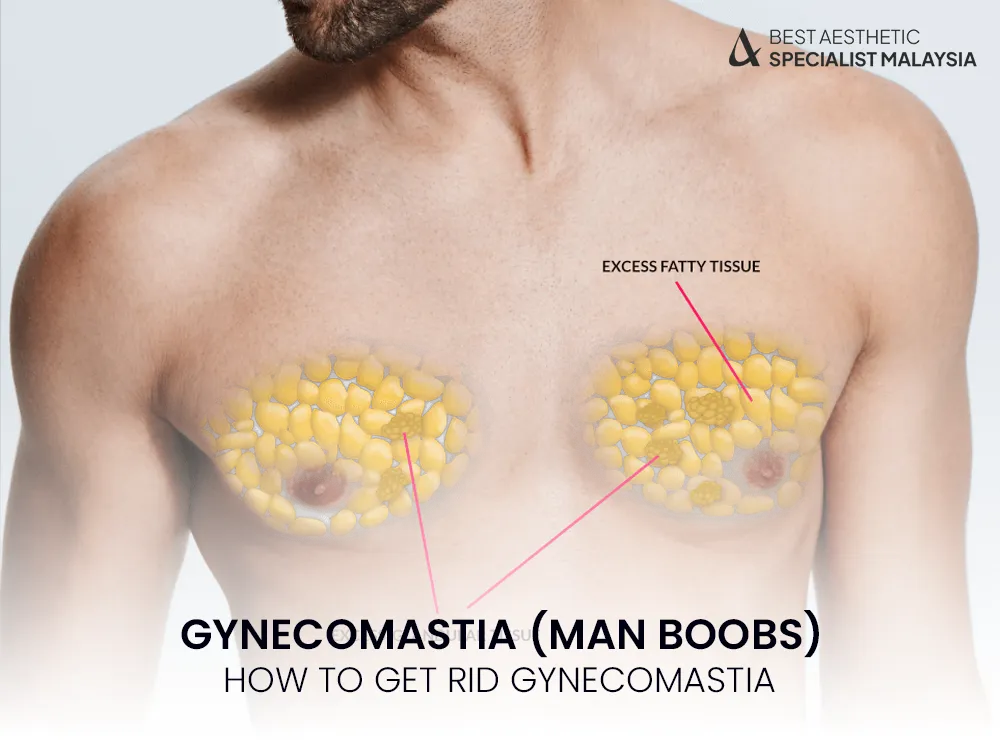Gynecomastia, commonly known as “man boobs,” is a condition where men develop enlarged breast tissue. This condition can be caused by hormonal imbalances, medication side effects, obesity, or genetic factors. While gynecomastia is typically harmless, it can lead to self-consciousness and discomfort. Fortunately, there are effective surgical and non-surgical treatments available to address this condition.
Understanding Gynecomastia

Gynecomastia results from an imbalance between estrogen and testosterone levels, leading to an overgrowth of glandular breast tissue. It can affect one or both breasts and is often accompanied by tenderness or pain. Distinguishing gynecomastia from pseudogynecomastia—which is caused by excess fat rather than glandular tissue—is essential in determining the appropriate treatment.
Non-Surgical Treatments for Gynecomastia
For mild to moderate cases, non-surgical approaches can be effective. These options include:
1. Lifestyle Changes
Diet and Exercise: Reducing overall body fat through a healthy diet and regular exercise can help alleviate pseudogynecomastia. Focus on cardiovascular activities, weight training, and core exercises to sculpt the chest.
Avoiding Triggers: Limiting alcohol intake and avoiding substances like anabolic steroids or recreational drugs can prevent hormone imbalances.
2. Hormonal Therapy
If gynecomastia is due to hormonal imbalances, medications like tamoxifen or aromatase inhibitors may be prescribed. These drugs help regulate estrogen levels, reducing breast tissue growth.
3. Compression Garments
Wearing compression shirts or vests can help flatten the chest appearance and provide psychological comfort, especially for individuals not ready to pursue surgery.
4. Medical Monitoring
In some cases, gynecomastia may resolve on its own, particularly in adolescent males. Regular check-ups can track progress without the need for immediate intervention.
Surgical Treatments for Gynecomastia
For severe or persistent cases, surgical intervention is often the most effective solution. There are two primary procedures for gynecomastia surgery:
1. Liposuction
Liposuction is ideal for pseudogynecomastia or cases with excess fatty tissue. This minimally invasive procedure involves small incisions and suctioning out fat deposits to contour the chest.
Recovery Time: Most patients can resume normal activities within a week, though swelling may persist for a few months.
2. Excision Surgery
This procedure is used when glandular breast tissue needs removal. Surgeons make incisions around the areola or along the chest to remove the glandular tissue and excess skin.
Recovery Time: Full recovery can take up to six weeks. Scarring is minimal and fades over time.
3. Combination Surgery
For patients with both excess fat and glandular tissue, a combination of liposuction and excision may be recommended to achieve optimal results.
Factors to Consider Before Surgery
Cost: Gynecomastia surgery costs vary depending on location, surgeon expertise, and the extent of the procedure. Typical prices range between $3,000 and $8,000 USD.
Risks: Potential risks include infection, scarring, asymmetry, or changes in nipple sensation. Choosing an experienced, board-certified surgeon minimizes these risks.
Preparation: Pre-surgery steps include stopping smoking, maintaining a stable weight, and avoiding certain medications that may increase bleeding.
Recovery Tips for Surgery
Follow Post-Operative Instructions: Adhere to your surgeon’s guidelines for wound care, medication, and activity restrictions.
Wear Compression Garments: These garments help reduce swelling and support the new chest contour.
Stay Active Carefully: Light walking can aid blood circulation, but avoid strenuous activities until fully healed.
Maintain a Healthy Lifestyle: A balanced diet and exercise regimen help preserve results.
Gynecomastia Surgery Malaysia Cost
In Malaysia, gynecomastia surgery costs are relatively affordable compared to other countries. The typical price range is between RM10,000 and RM18,000, depending on factors such as:
Surgeon’s Expertise: Highly experienced and board-certified surgeons may charge higher fees.
Hospital Facilities: Private hospitals and clinics with advanced equipment may have higher facility costs.
Procedure Type: Liposuction-only procedures are generally less expensive than excision or combination surgeries.
Post-Operative Care: Additional costs for compression garments, medications, and follow-up consultations may apply.
Patients are advised to consult with multiple clinics to compare prices and ensure they are receiving quality care from accredited professionals.
Conclusion
Whether through lifestyle changes, hormonal therapy, or surgery, gynecomastia can be effectively treated to restore confidence and comfort. Consult a qualified healthcare provider to determine the best approach for your specific situation. Remember, each case is unique, and a tailored treatment plan ensures the best possible outcome.



